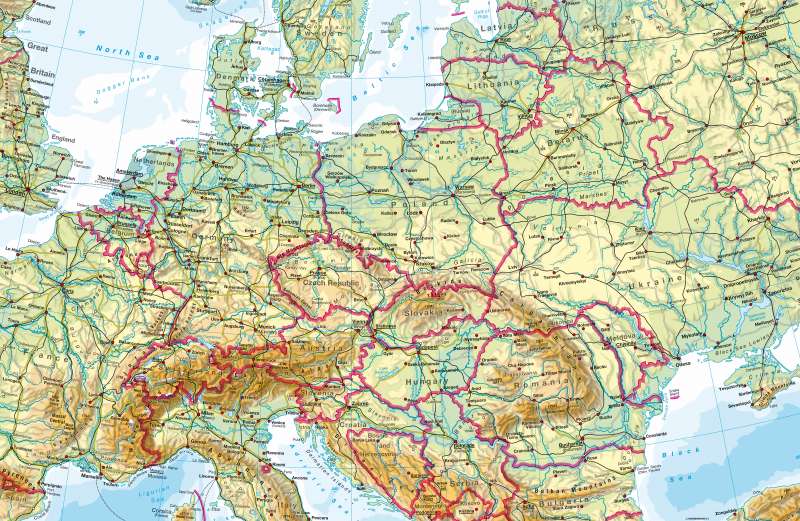Central Europe — Physical map
Central Europe - Physical Map
978-3-14-100790-9 | Page 70 | Ill. 1

Information
Central Europe(See notes on German maps 48-53)
Eastern Europe
Long-range troughs, plaques and hill regions determine the surface shape of Eastern Europe. Mountain limits only reach the higher altitudes in the south-east (Carpathian range) and south (Yayla Mountains in the Crimea) in the East European Plain. In South Eastern Europe, the inland Caspian Sea, the Sea of Azov and the Black Sea lie to the north of the Baltic Sea. There is a wide transition zone (Poland) in the centre. In the East, the Caspian Sea and Ural Mountains mark the boundary with Asia.
Within the Eastern Lowlands, the two large north-south oriented plates are not visable above a height of 400 metres. The surface of North Eastern Europe was formed during times of glaciation, the ice reached as far as the Kiev-Lviv Kazan line, which was it's furthest extent . Outside the territory of the recent glaciation is a particularly broad loess belt, which is now used extensively for agricultural. There are also many lakes in North Eastern Europe which are a result of the last glaciation.
The encroachment of man into the water network is noticable in the large currents that flow through the lowlands. During the winter, the rivers are often frozen for several months.
A: M. Felsch; Ü: Colette Fleming




